Just about everyone has heard of chamomile, whether they’ve seen the cheerful little plants growing in the garden, or have relaxed with a piping-hot cup of chamomile tea.
But not everyone knows that there are two species that share the common name chamomile, and they each have different growth habits and uses.
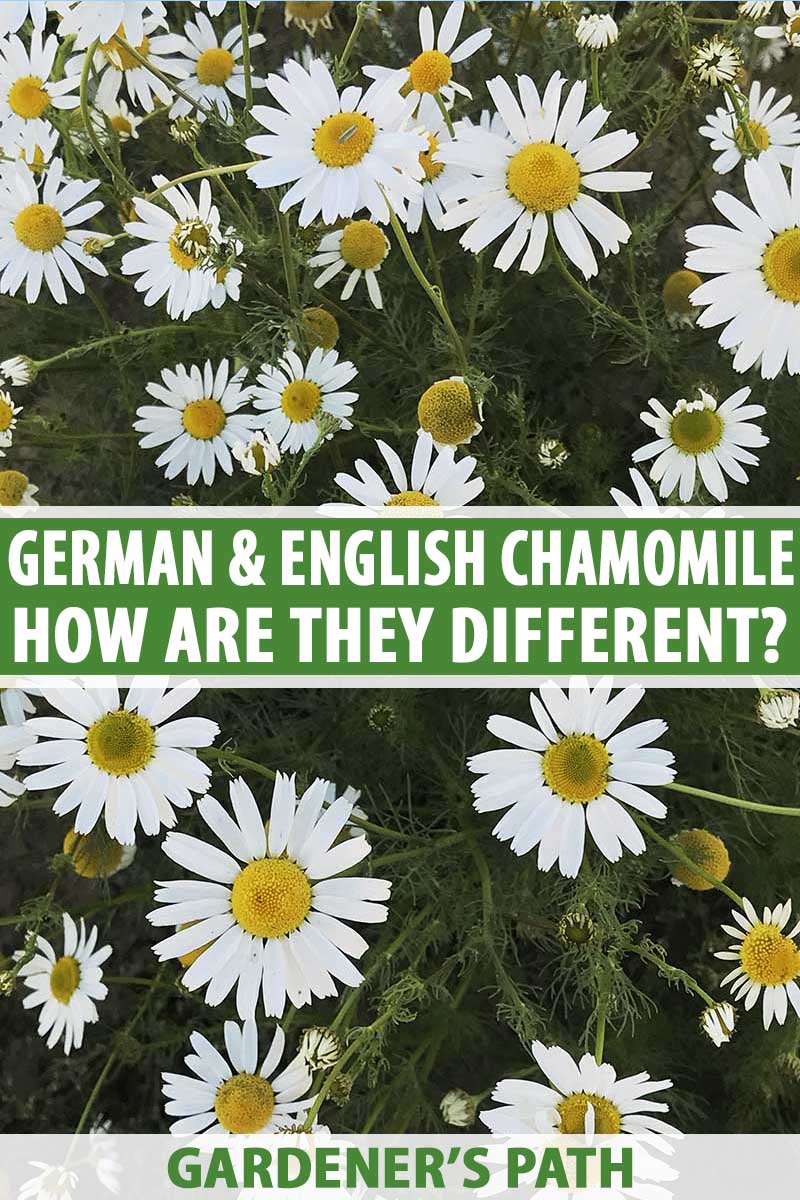
We link to vendors to help you find relevant products. If you buy from one of our links, we may earn a commission.
English, or Roman chamomile, Chamaemelum nobile, is a low-growing plant that you’ll often see growing between pavers in cottage gardens or as a ground cover.
The German variety, Matricaria chamomilla (or M. recutita), has an upright growth habit and produces masses of small, white flowers during the summer.
Both varieties are members of the aster, or Asteraceae family, however, they belong to different genera.
To learn more about how to add these plants to your landscape, check out our guide to growing chamomile. If you’re short of space, chamomile grows well in containers.
In this article, I’ll explain the difference between the two varieties. Here’s what I’ll cover:
What You’ll Learn
English (Roman) Chamomile
The English variety is a perennial with white flowers and lacy foliage, suitable for gardeners in USDA Hardiness Zones 4-11. It’s native to southern and western Europe, and north Africa.
You’ll also hear it called Roman or garden chamomile.
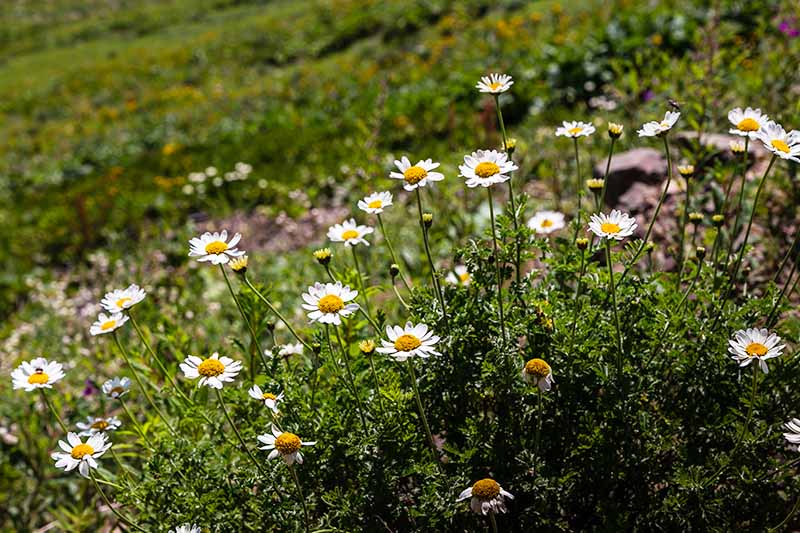
This evergreen plant grows to a mature height of four to five inches tall. However, it can sometimes grow up to 12 inches tall if it’s planted in an area where it is unable to spread.
Each plant spreads about a foot wide on stems that seem to crawl along the surface of the ground. The plant sends out rhizomes, so an individual plant can turn into a large carpet of ground cover in no time.
It has naturalized in many parts of the Eastern and Midwestern US, as well as California.
German Chamomile
German chamomile is a self-seeding annual plant with small white flowers and lacy foliage. It thrives in Zones 4-9.
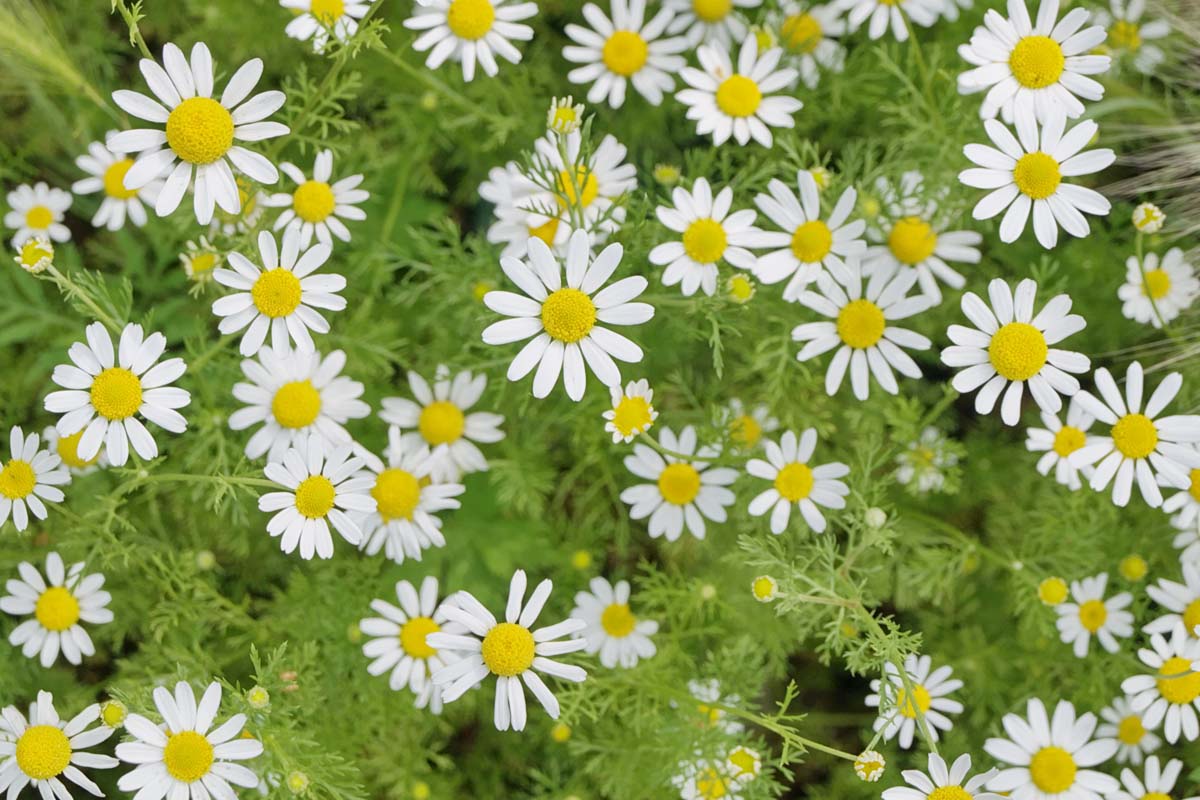
It’s native to central and southern Europe, and is also known as Hungarian or wild chamomile.
This variety grows to a mature height of two to three feet, and has thin, spindle-shaped roots.
M. chamomilla thrives in temperatures between 44 and 79°F, but it can tolerate temperatures as low as 10°F for a short time.
It produces the most abundant and potent oils when the days are long and warm.
It has naturalized in most parts of the US except the South, California, Nevada, Idaho, Montana, New Mexico, Colorado, Oklahoma, South Dakota, and Nebraska.
Differences
The English variety, C. nobile, produces larger but fewer and less frequent blossoms than the German variety. The leaves are more substantial – both thicker and larger than the delicate fern-like foliage of M. chamomilla.

The German variety, on the other hand, is a prolific bloomer and will grow new flowers soon after you pluck them. The cone at the center of the flower is hollow, while C. nobile has a tiny bract between the florets and a solid central cone.
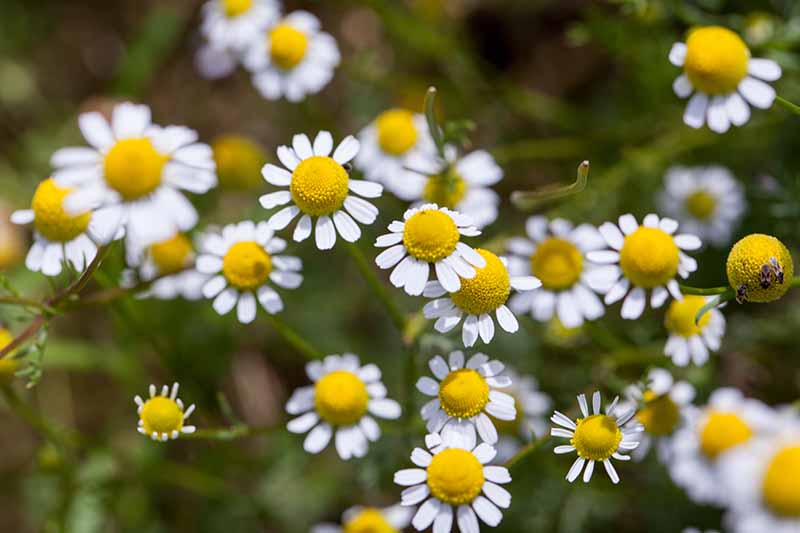
English chamomile has hairy stems, while those of the German variety are smooth.
Chamos is Greek for “ground” and melos for “apple,” so the word chamomile essentially translates to “ground apple.” This should give you some idea of their scent as well. (No, they don’t smell like potatoes or the French pomme de terre – they smell a lot like apples!)
In fact, both types have delicious apple-like scented flowers, though they don’t smell exactly the same.
The German variety has a scent that is slightly straw-like with hints of apple in comparison to the sweet apple fragrance of C. nobile, the English type.
Best Uses
German chamomile is most commonly grown for its delicate, ornamental white flowers that add interest to the summer garden. The blossoms can be harvested to make into a soothing aromatic tea.

It is sometimes cultivated for its essential oil, which is higher in the active ingredient chamazulene than the Roman variety. Chamazulene is an oil with anti-inflammatory properties, and it is also found in yarrow.
The light blue essential oil is used by herbalists to help alleviate anxiety, as well as the symptoms of some digestive issues and skin conditions.
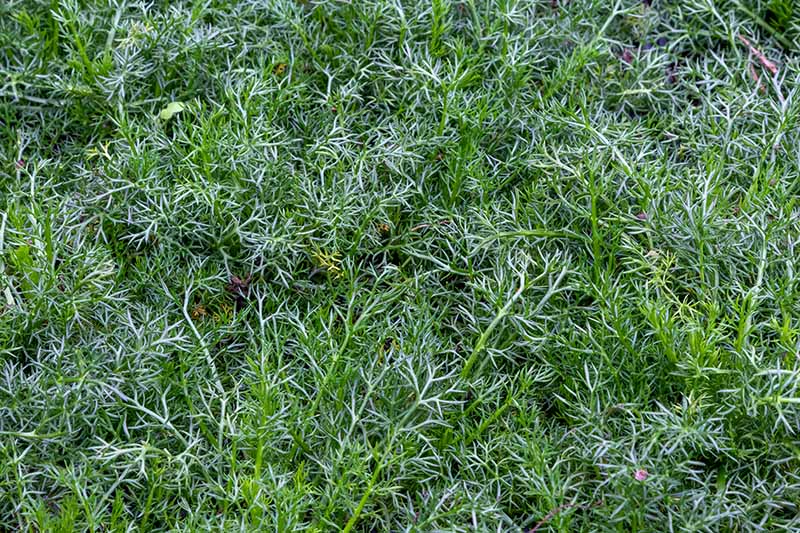
The Roman type is most often grown as a culinary ground cover, and it will tolerate light foot traffic. It can be used as a lawn replacement or to fill in the gaps between pavers, or it may be planted in rock gardens.
The flowers have a sweeter, more pronounced apple flavor and are also suitable for making tea. But they are less abundant than those of the other variety, so your harvest will be smaller.
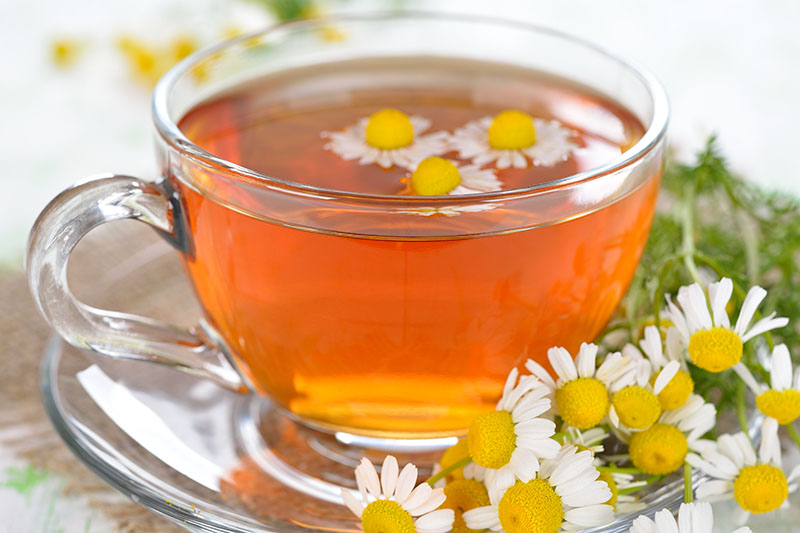
Both types attract a range of beneficial insects such as hoverflies, ladybugs, and honey bees. They are relatively resistant to pests, except for aphids.
According to experts at Penn State Hershey Medical Center, extracts, teas, and ointments made from both species can be used to alleviate anxiety and stomach problems, and they may ease the symptoms of eczema.
The FDA has classified both species as “generally regarded as safe” for internal use.
You Can’t Go Wrong
While they have different recommended uses, you can’t go wrong with either type of chamomile. They each have a place in the garden depending on your goals, and both give you that sweet, heavenly scent.
I have both growing in my garden because I don’t see any reason to stick with just one variety. I use the Roman type to fill in the pavers around my patio, and the German species is growing all around my garden in containers so I can have fresh tea whenever I want.
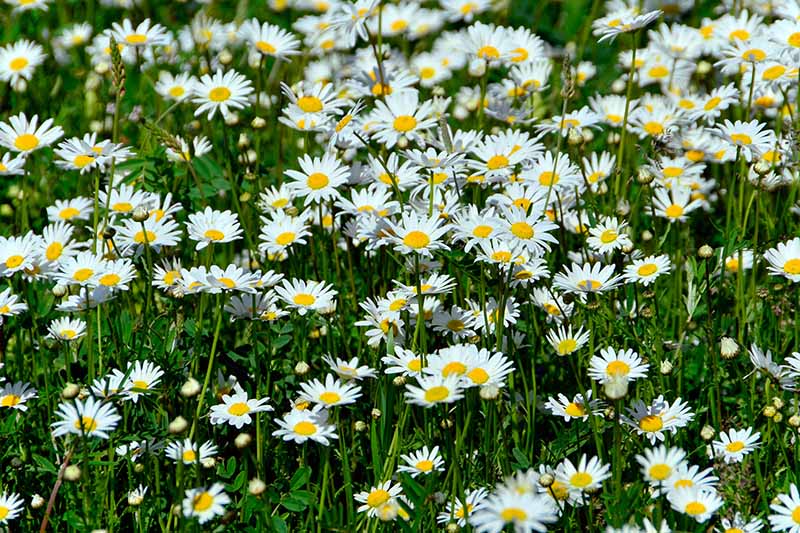
Which type are you interested in growing? What are your plans for using your chamomile harvest? I’d love to hear all about it.
If you’re interested in growing other medicinal herbs, visit the following guides next:
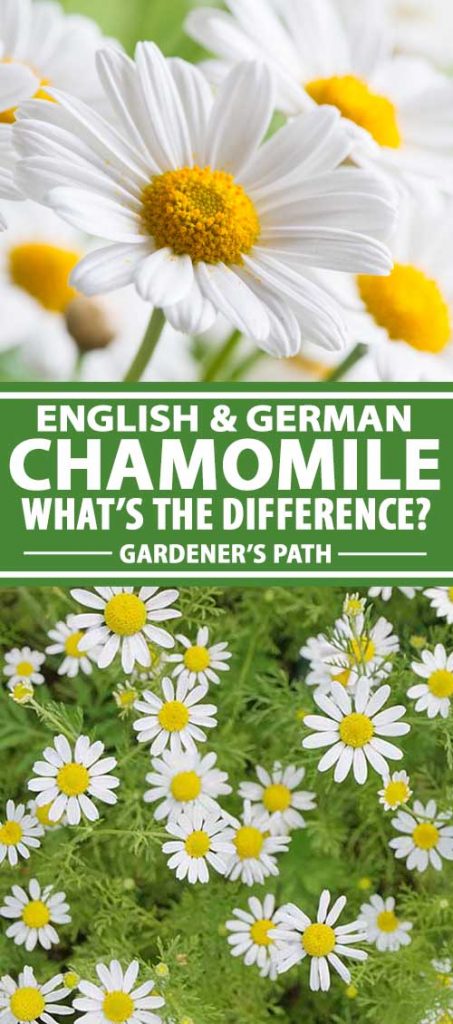
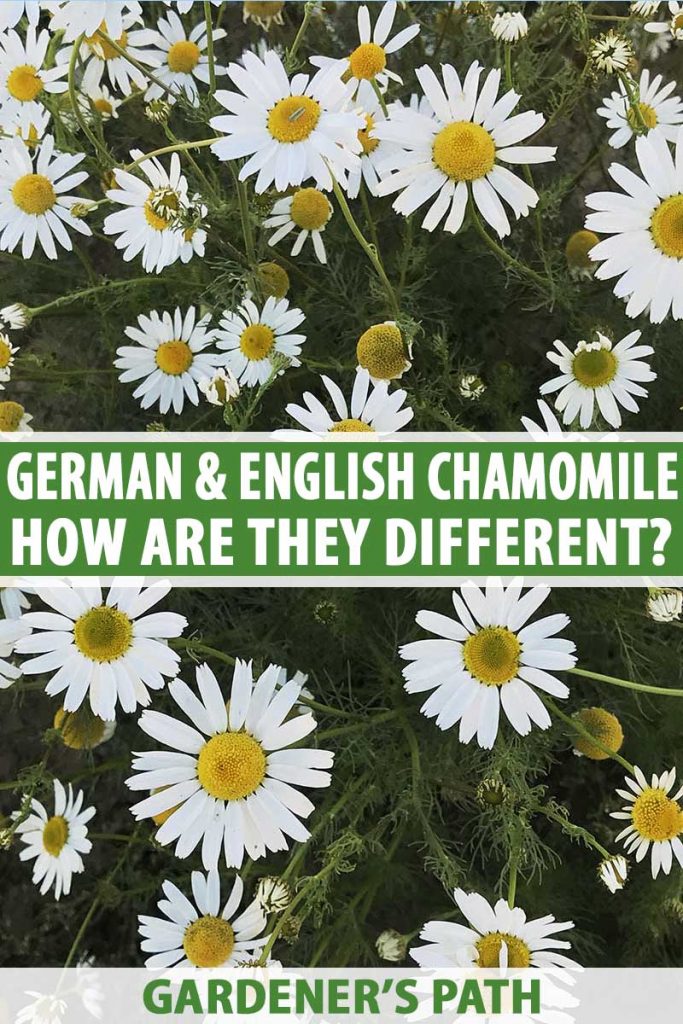
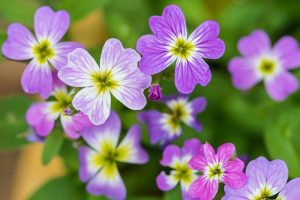

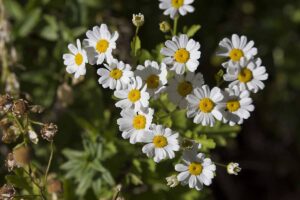
This article is maddeningly confusing. At the beginning, it says that Chamaemelum nobile is English (or Roman) Chamomile – but at the end, it says “The German variety has a scent that is slightly straw-like with hints of apple in comparison to the sweet apple fragrance of M. chamomillla, the English type.” Perhaps it was a simple mistake, but now I’m totally mixed up because I’m not sure which was correct and which was the mistake ?
Hi Blanche – whoops! Thank you for catching that, as you correctly point out, it’s supposed to say “the sweet apple fragrance of C. nobile, the English type.” I’ve corrected that, and many thanks for pointing it out.
My 1st yr growing chamomile from seed. German type. Now that I know the difference between that and English or Roman, I may need to grow both type.. Good article and Not confusing at all. Gardeners and growers think differently than ppl who skim articles, and can’t follow along. It helps if you understand history of Rome to get it or why its the same as English. Thanks again
Are you aware there are gaps in this? I usually print files like this for future reference but this one wasted a lot of space. In any case, if this is done to not print pictures, that is a shame when pictures are like a thousand useful words.
Hi Linda, sorry to hear that! We can’t control whether your printer will print pictures, but the gaps may be due to positioning of adverts. To remove these ads for printing, I recommend you put it into “reader mode” on your web browser. That will keep the pictures but remove sidebars and other clutter. Hope this helps!
where can I buy chamomile flower extract just from germany.